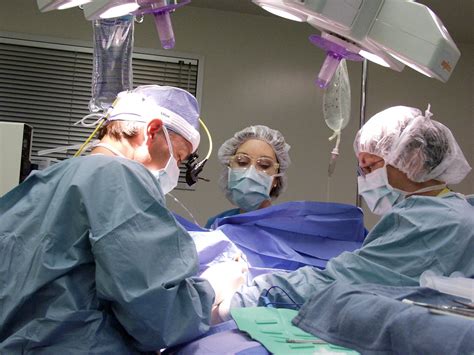Intro
Discover the vital roles of a Certified Registered Nurse Anesthetist (CRNA) in healthcare. Learn about their 5 key responsibilities, from administering anesthesia to managing patient care. Explore the skills and expertise required for this critical profession, including anesthesia administration, patient assessment, and crisis management, to become a skilled CRNA.
As the healthcare landscape continues to evolve, the role of Certified Registered Nurse Anesthetists (CRNAs) has become increasingly vital in ensuring patients receive safe and effective anesthesia care. CRNAs are advanced practice registered nurses who have completed specialized education and training in anesthesia. They play a crucial role in the healthcare system, and their expertise is in high demand.

Role 1: Anesthesia Care Provider
CRNAs are qualified to provide a wide range of anesthesia services, including general anesthesia, regional anesthesia, and sedation. They work closely with other healthcare professionals, such as surgeons and anesthesiologists, to develop individualized anesthesia care plans that meet the unique needs of each patient.
In this role, CRNAs are responsible for conducting pre-anesthesia assessments, administering anesthesia, and monitoring patients during procedures. They also provide post-anesthesia care, including pain management and recovery services.
Anesthesia Care in Various Settings
CRNAs work in a variety of settings, including hospitals, clinics, and outpatient surgery centers. They provide anesthesia care for patients undergoing surgical procedures, as well as for those requiring pain management services.
Some CRNAs specialize in specific types of anesthesia care, such as pediatric anesthesia or cardiothoracic anesthesia. Others may work in specialized settings, such as pain management clinics or critical care units.

Role 2: Educator and Mentor
CRNAs play an important role in educating and mentoring students, nurses, and other healthcare professionals. They share their knowledge and expertise to help others develop the skills and competencies needed to provide high-quality anesthesia care.
In this role, CRNAs may work as faculty members in academic institutions, teaching anesthesia courses and supervising clinical rotations. They may also serve as preceptors, providing guidance and support to students and new graduates as they transition into practice.
Leadership in Education and Research
Some CRNAs take on leadership roles in education and research, developing curriculum and conducting studies to advance the field of anesthesia care. They may also participate in professional organizations, contributing to the development of standards and guidelines for anesthesia practice.

Role 3: Patient Advocate
CRNAs are patient advocates, working to ensure that patients receive safe, effective, and patient-centered care. They communicate with patients and their families, providing education and support throughout the perioperative period.
In this role, CRNAs may work with patients who have unique needs or concerns, such as those with chronic medical conditions or those who are anxious about undergoing surgery. They may also advocate for patients' rights and interests, ensuring that patients receive the care they need and deserve.
Patient-Centered Care
CRNAs are committed to providing patient-centered care, which means they prioritize patients' needs and preferences when making decisions about anesthesia care. They work closely with patients and their families to develop individualized care plans that address their unique needs and concerns.

Role 4: Quality Improvement Specialist
CRNAs play a critical role in quality improvement, working to ensure that anesthesia care is safe, effective, and efficient. They analyze data and outcomes, identifying areas for improvement and developing strategies to address these issues.
In this role, CRNAs may work on quality improvement projects, such as reducing anesthesia-related complications or improving patient satisfaction. They may also participate in peer review and quality assurance activities, helping to ensure that anesthesia care meets high standards.
Quality and Safety in Anesthesia Care
CRNAs are committed to providing high-quality anesthesia care, which means they prioritize patient safety and well-being above all else. They follow evidence-based guidelines and protocols, and they continually assess and improve their practice to ensure that patients receive the best possible care.

Role 5: Leader and Manager
CRNAs may take on leadership and management roles, overseeing anesthesia departments or services. They may be responsible for budgeting, staffing, and resource allocation, as well as for developing policies and procedures.
In this role, CRNAs may work closely with other healthcare leaders, collaborating to improve patient outcomes and advance the organization's mission. They may also participate in strategic planning, helping to shape the future of anesthesia care.
Leadership in Anesthesia Care
CRNAs are well-suited to leadership roles, given their expertise in anesthesia care and their ability to communicate effectively with others. They may serve as department chairs, directors, or managers, providing leadership and guidance to anesthesia teams.

As the healthcare landscape continues to evolve, the role of CRNAs will become increasingly important. By providing high-quality anesthesia care, educating and mentoring others, advocating for patients, improving quality and safety, and leading and managing anesthesia teams, CRNAs will help shape the future of healthcare.
We invite you to share your thoughts and experiences with CRNAs in the comments below. How have CRNAs made a difference in your life or in the lives of your loved ones? What do you think are the most critical roles that CRNAs play in the healthcare system?
What is the role of a Certified Registered Nurse Anesthetist (CRNA)?
+A CRNA is an advanced practice registered nurse who provides anesthesia care to patients. They work in a variety of settings, including hospitals, clinics, and outpatient surgery centers, and provide a range of services, including general anesthesia, regional anesthesia, and sedation.
What are the different roles that CRNAs play in the healthcare system?
+CRNAs play a variety of roles, including anesthesia care provider, educator and mentor, patient advocate, quality improvement specialist, and leader and manager.
What are the benefits of working with a CRNA?
+Working with a CRNA can provide several benefits, including safe and effective anesthesia care, personalized attention and support, and access to expert knowledge and skills.
How do CRNAs contribute to quality improvement in anesthesia care?
+CRNAs contribute to quality improvement in anesthesia care by analyzing data and outcomes, identifying areas for improvement, and developing strategies to address these issues. They also participate in peer review and quality assurance activities to ensure that anesthesia care meets high standards.
What are the leadership roles that CRNAs can take on in the healthcare system?
+CRNAs can take on leadership roles, such as department chairs, directors, or managers, providing leadership and guidance to anesthesia teams. They may also participate in strategic planning, helping to shape the future of anesthesia care.
